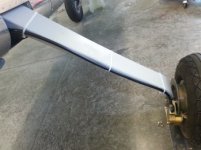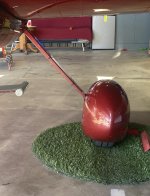I have an original RV-12 (i.e., undrilled gear legs) that is having uneven MATCO brake pad wear.
Three of the brake pads have even and equal wear. But, the right outboard stationary brake pad has 0.020” of tapered wear and at its thinnest spot is 0.025” thinner than the other brake pads.
MATCO technical support tells me that this is due the aluminum brake line acting as a big spring that prevents the brake caliper from being free floating. Namely, the brake line is pushing the caliper to one side rather than allowing it to stay centered on the brake disc. This causes uneven wear and is a known issue on RV’s.
Have others experienced this? If so, what have you done to resolve or minimize this?
Thanks.
Brett H
Columbus, IN
Three of the brake pads have even and equal wear. But, the right outboard stationary brake pad has 0.020” of tapered wear and at its thinnest spot is 0.025” thinner than the other brake pads.
MATCO technical support tells me that this is due the aluminum brake line acting as a big spring that prevents the brake caliper from being free floating. Namely, the brake line is pushing the caliper to one side rather than allowing it to stay centered on the brake disc. This causes uneven wear and is a known issue on RV’s.
Have others experienced this? If so, what have you done to resolve or minimize this?
Thanks.
Brett H
Columbus, IN



